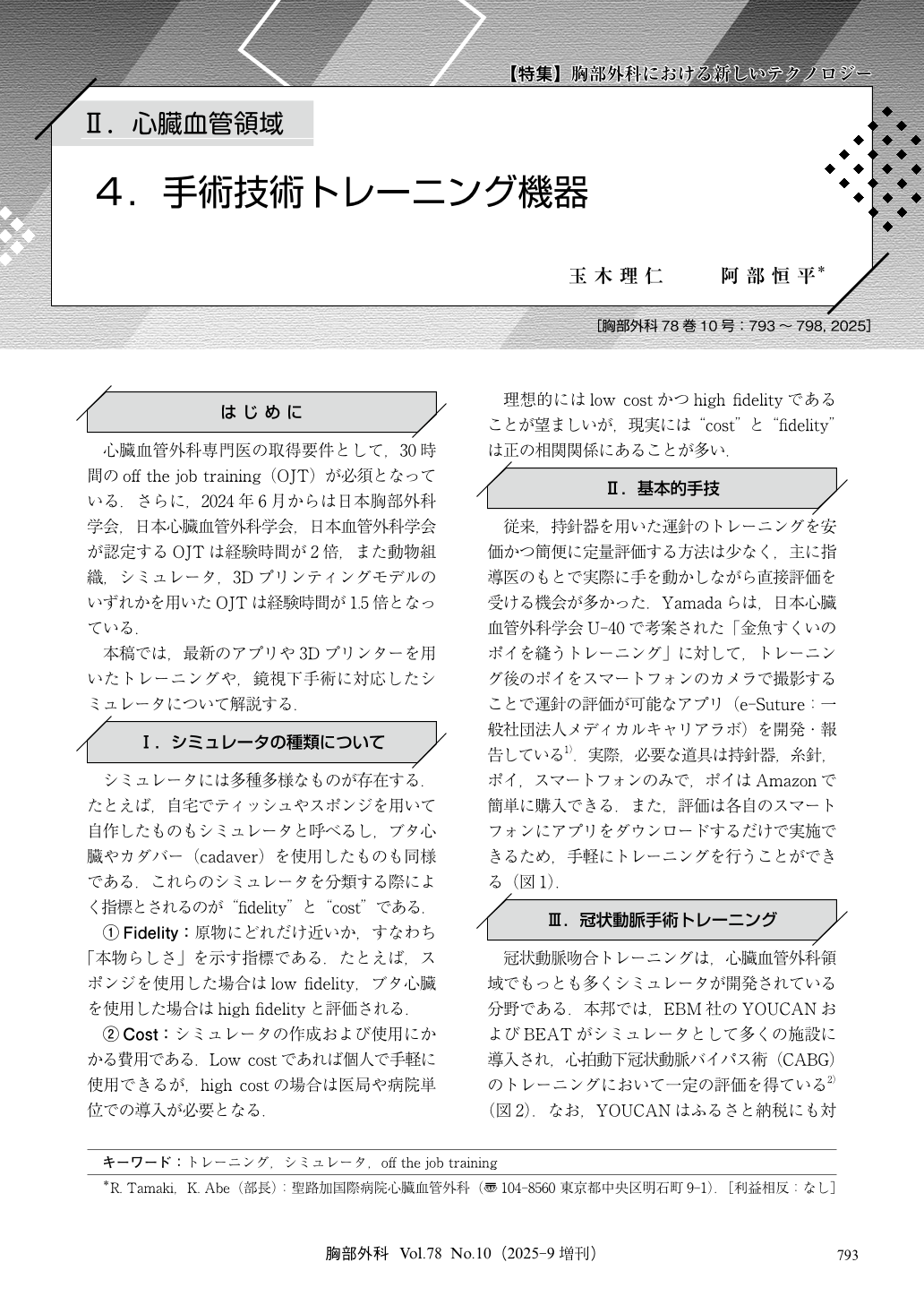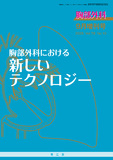Japanese
English
- 有料閲覧
- Abstract 文献概要
- 1ページ目 Look Inside
- 参考文献 Reference
心臓血管外科専門医の取得要件として,30時間のoff the job training(OJT)が必須となっている.さらに,2024年6月からは日本胸部外科学会,日本心臓血管外科学会,日本血管外科学会が認定するOJTは経験時間が2倍,また動物組織,シミュレータ,3Dプリンティングモデルのいずれかを用いたOJTは経験時間が1.5倍となっている.
Currently, board certification for cardiovascular surgeons in Japan mandates a minimum of 30 hours of off the job training (OJT). However, starting in June 2024, training hours will be doubled when conducted under the auspices of the Japanese Societies of Thoracic, Cardiovascular, and Vascular Surgery, and increased by 1.5 times when using animal tissue, simulators, or three dimensional (3D) printing models. The growing adoption of minimally invasive techniques has led to a decline in traditional median sternotomy procedures, thereby reducing direct operative experience for young surgeons and underscoring the need for innovative training methods. Simulation tools in cardiovascular surgery span a wide range in both fidelity―the extent to which a model replicates real anatomical conditions―and cost. Options vary from low-cost, low-fidelity homemade models using everyday materials to high-fidelity systems employing porcine hearts or cadaveric tissues. Recent innovations include smartphone-based applications, such as the e-Suture app, which provides objective evaluations of needle handling, and online training platforms that have enabled remote coronary artery anastomosis training during the coronavirus disease (COVID)-19 pandemic. Moreover, high-fidelity simulators using 3D printing technology and robotic surgery training devices have broadened the scope of available educational resources. Ultimately, it is most important for trainees to be aware of the need to transfer their skills to clinical practice when undergoing training.

© Nankodo Co., Ltd., 2025


